When you’re looking to buy a mobility scooter in the UK, it’s essential to understand the laws and regulations that apply. While mobility scooters offer independence and freedom for people with limited mobility, they are still considered vehicles and are therefore subject to certain legal requirements.
In this article, we’ll cover everything you need to know about mobility scooters and the law — including age restrictions, registration, insurance, road use, and parking rules.
Before you begin, it’s worth noting the difference between class 2 and class 3 mobility scooters, as mobility scooter laws and usage rules vary according to the class of scooter.
In the UK, you can only drive a mobility scooter if you have a physical disability or limited mobility because of an injury or medical condition.
In addition to this, there are specific eyesight requirements for mobility scooter users: If you own a class 2 or 3 mobility scooter, you must be able to read a car’s number plate from 12.3 metres away. If your mobility scooter is ‘not in a class’, you must be able to read a number plate from a distance of 20 metres. You can be prosecuted if you have an accident because of poor eyesight, so it’s important to ensure your vision meets the legal standard.
Mobility scooter age limits vary depending on the class of your scooter:
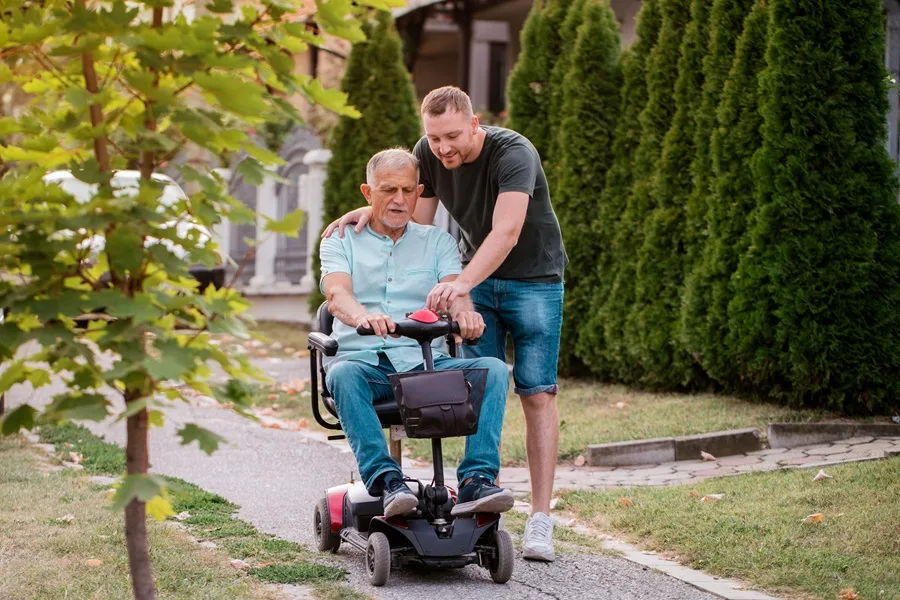
No, mobility scooter laws don’t require you to take a test to drive a mobility scooter.
However, we recommend taking your scooter somewhere quiet before your first outing to familiarise yourself with the controls and how your scooter handles. Check out our tips for first time mobility scooter users.
No, you don’t need a driving licence to legally operate a mobility scooter in the UK, regardless of the class.
They are exempt from the UK driving licence system because they are classed as invalid carriages under the law.
All mobility scooters are exempt from road tax. However, class 3 scooters must be registered with the DVLA before they can be used on public roads, in accordance with current mobility scooter regulations.
Before taking your class 3 mobility scooter on the road, it is essential that you register it with the DVLA to ensure it complies with UK road safety laws. Find out more about how to register your mobility scooter with the DVLA.

Whilst you don’t legally need to get insurance for a mobility scooter, it is strongly recommended to cover you in the event of an accident, mechanical failure, theft or breakdown. Learn more about the benefits of insuring your mobility scooter.
The mobility scooter speed limit and the law on mobility scooters when it comes to road or pavement use, vary depending on the class.
Read our article Mobility Scooters on the Road: The Rules for more details.
You can legally park your mobility scooter anywhere that it doesn’t cause an obstruction. When you park, avoid blocking pavements, driveways, cycle paths, or dropped kerbs.
Many shops and supermarkets have designated mobility scooter parking bays located close to their entrances.
Note: You cannot use a blue badge when parking on your mobility scooter, as they only apply to cars and other motor vehicles.
Yes, class 3 mobility scooters must be equipped with lights, indicators and a rear view mirror to ensure they are safe and legal on the roads.
Although not legally required, it is recommended that you wear a helmet, hi-vis, and other protective gear when riding a scooter, especially on roads.
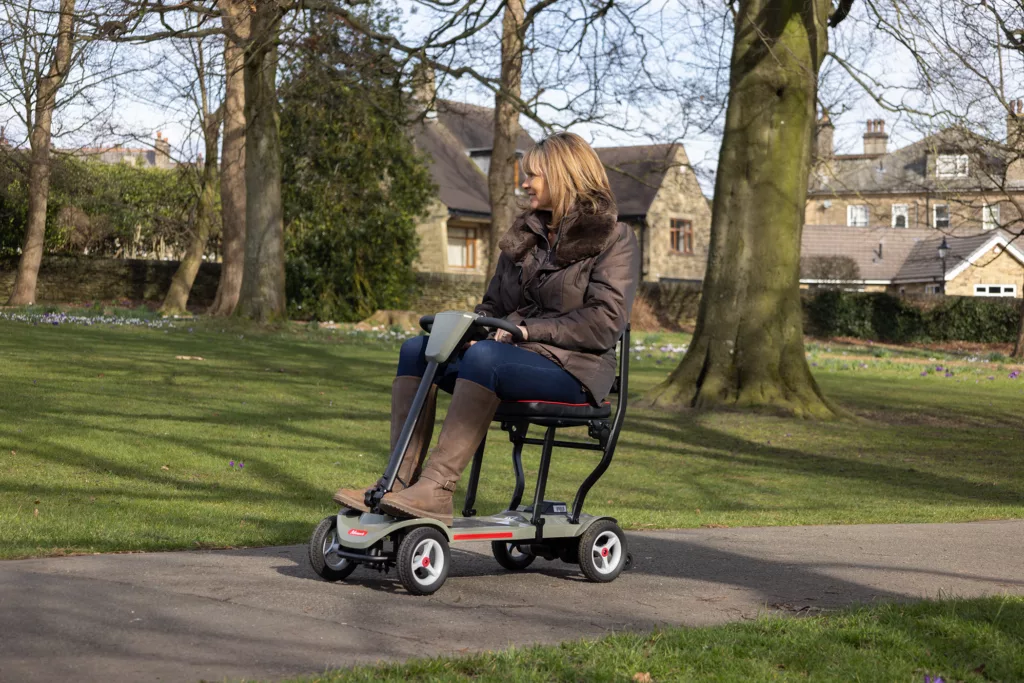
Choosing the right scooter means understanding the features you need as well as the mobility scooter laws that apply to different classes.
Whether you need a compact class 2 scooter for pavement use or a more powerful class 3 model for journeys on the road, Monarch has a wide range of mobility scooters to suit every lifestyle and budget.
Contact our expert team for further details or to arrange a free home demo.
The Disabled Parking Blue Badge Scheme offers vital parking concessions for people with severe mobility issues, enabling them to park closer to their destination. This article explores the benefits, Blue Badge eligibility criteria, the application process, and rules for parking.
We’ll also look at how folding mobility scooters can enhance your mobility experience once you’ve parked your vehicle!
The Blue Badge scheme is a national initiative designed to support those with significant mobility challenges. It allows easier access to shops, services, and community facilities by granting parking concessions.
The scheme operates differently in England, Northern Ireland, Scotland and Wales. This guide focuses on the rules in England. However, Blue Badge parking regulations can differ by council, so it’s best to check your local council website for any specific queries you may have or to check the availability of disabled parking spaces in their car parks
You may be wondering: What benefits do Blue Badge holders get?
Being a Blue Badge holder provides more than just access to convenient parking. Blue Badge holder benefits also include:
However, in private car parks (e.g. NCP and hospitals), Blue Badge holders may still have to pay – always check local signage.
To get the most from your parking access, many Blue Badge users choose to keep a lightweight folding mobility scooter in the boot of their car. These scooters allow you to easily travel short distances after parking – ideal for shopping trips, medical appointments, or days out.
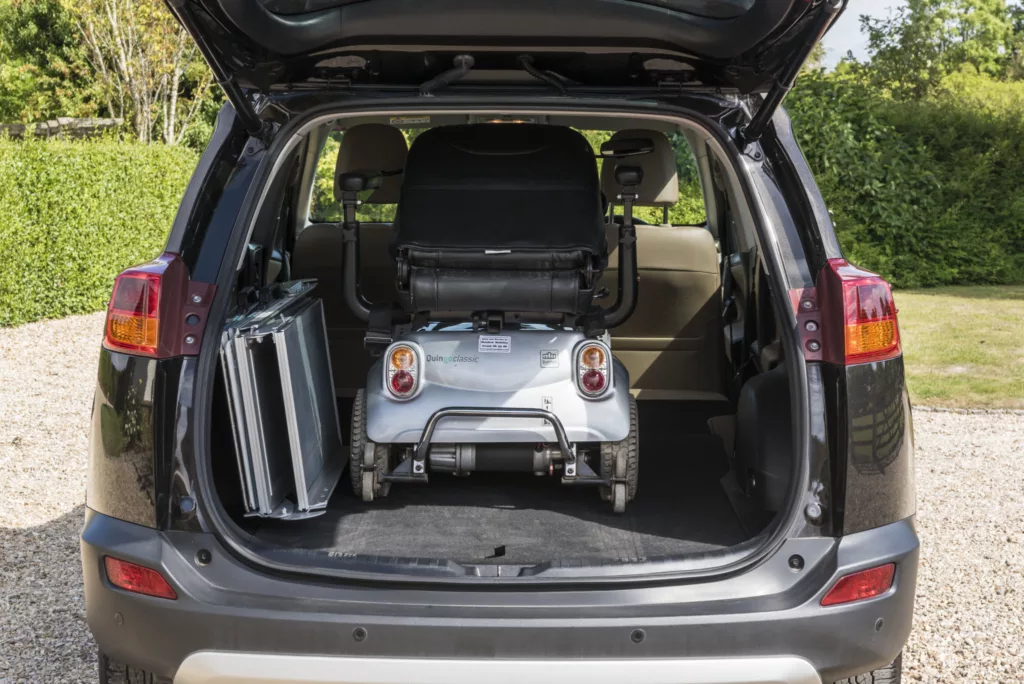
The Blue Badge Eligibility Criteria are based on your mobility, medical conditions, and safety needs.
You automatically qualify for a Blue Badge if you:
You may also qualify if you:
*Visit GOV.UK Blue Badge Guidance for a full and detailed breakdown of the Blue Badge eligibility criteria.
So, how do you apply for a disabled parking permit? It’s simple – and you can apply for a disabled badge online.
A Blue Badge costs £10 in England in Northern Ireland, £20 in Scotland, and is free in Wales. The badge typically lasts for three years, after which you will need to reapply for a new one.
You will need to provide:
Online Blue Badge application can be completed on gov.uk
If you have lost your disabled badge, you can apply for a new one at on the government website.
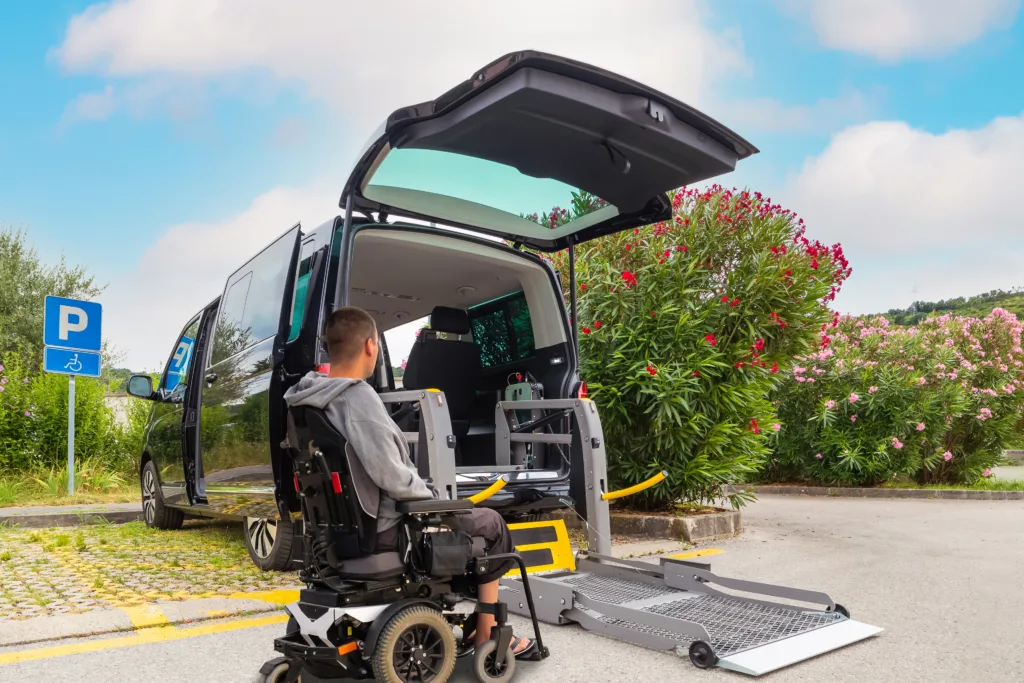
Knowing the disabled Blue Badge parking rules helps prevent fines and ensures the scheme benefits those who need it most.
Remember: The badge is for your use only and can only be used when you are the driver, a passenger, or if someone is picking you up or dropping you off. You are not allowed to give your badge to someone running errands on your behalf.
Misuse of your Blue Badge can lead to a £1000 fine and possible confiscation.
Discover other UK laws relating to mobility scooters.
So, where can Blue Badge holders park? When you display your valid badge, Blue Badge holders should be able to park for free in the following places:
You are not allowed to park in the following places:
Yes – in most areas, you can park in resident permit bays without needing a resident permit, as long as your valid Blue Badge is displayed.
Blue Badge holders don’t usually need to pay for on-street parking. However, you may need to pay in private or NCP car parks. Always check the signs.
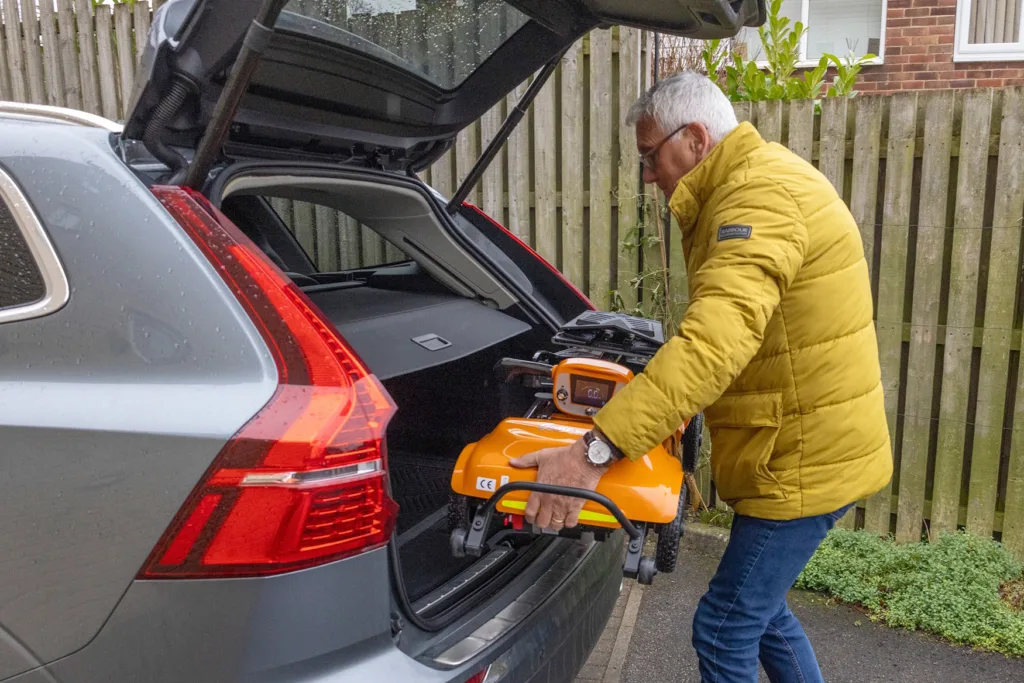
Once you’ve parked, a foldable mobility scooter can help you travel comfortably and independently around your destination.
Lightweight and compact, these scooters are ideal for navigating shops and supermarkets; visiting friends and family; dining out or visiting attractions.
Many foldable scooters can be manually collapsed or folded remotely, making them easy to store in your car boot. Find out more about Monarch Mobility’s folding mobility scooters.
The Disabled Parking Blue Badge Scheme offers significant benefits to those who need it most. Whether you’re applying for the first time or need to renew, understanding your rights, rules, and responsibilities is crucial. When used correctly, your Blue Badge can be a vital lifeline to independence.
If you need advice on finding the perfect mobility scooter to fit into your car, contact the team at Monarch Mobility who will be happy to arrange a free home demo!
Will you be joining us at the Motability Harrogate event on the 1st and 2nd of August?